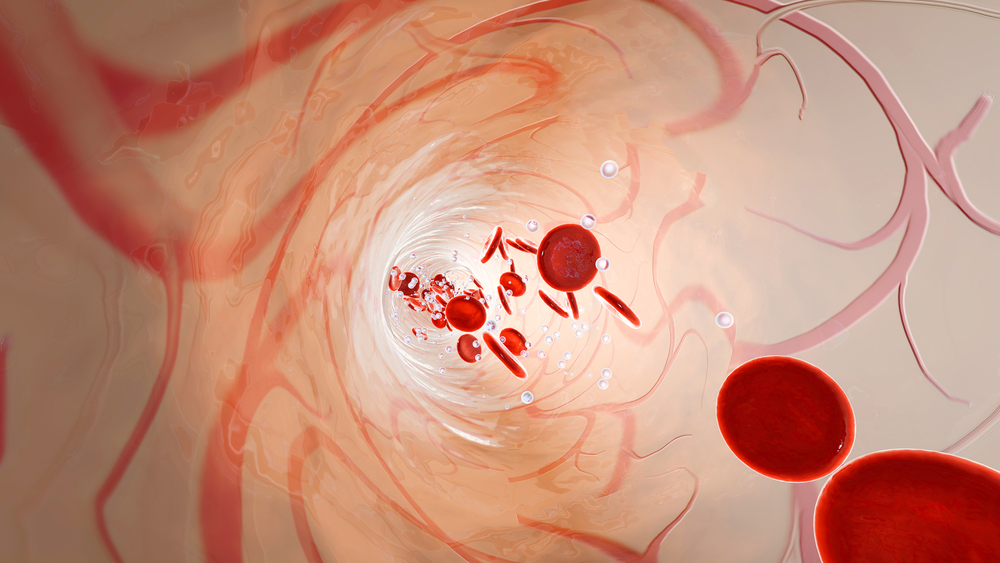Compound 3 Shows Promise in Relieving PH Disease Features, Study Says

Compound 3 is a potent and selective inhibitor of ROCK-1 and ROCK-2 — proteins associated with blood vessel contraction — and can ameliorate disease features of pulmonary hypertension (PH), a study finds.
The study “Pharmacological characterization of a highly selective Rho kinase (ROCK) inhibitor and its therapeutic effects in experimental pulmonary hypertension” was published in the European Journal of Pharmacology.
The protein enzymes ROCK-1 and ROCK-2 (which stands for Rho-associated protein kinases 1 and 2) have essential roles in inducing the narrowing and proliferation of smooth muscle cells (cells found in blood vessels with contractile functions). The two proteins are present in heart, lung, and blood vessels, and are essential in the development of PH in both humans and rodents.
Studies have shown that although two ROCK-inhibitors — fasudil and Y-27632 — have some therapeutic effect in treating PH, they show non-specific pharmacological toxic effects, as well as low potency (amount required to produce an effect).
A team led by researchers at Chiesi Farmaceutici, in Parma, Italy, found a ROCK-inhibitor with promising pharmacological features in an abandoned patent application from 2010. The ROCK-inhibitor was called Compound 3 — its original name was Trans-6-((4-aminocyclohexyl)amino)-5-fluoro-2-methoxynicotinamide.
Interested in PH research? Check out our forums and join the conversation!
Since the compound presented similar solubility and bioavailability features compared with fasudil and Y-27632, the researchers investigated the pharmacological profile of Compound 3 using protein structure simulations, enzymatic assays, and animal models of PH.
They first evaluated the inhibitory potency of Compound 3 on ROCK-1 and ROCK-2, and compared it with Y-27632 and fasudil by measuring the concentration of the treatment necessary for a 50% inhibition (IC50).
IC50-assessment of Compound 3 — a value of 10 nanomolar for ROCK-1, and 7.8 nanomolar for ROCK-2 — showed that it was about 10 times more potent than Y-27632 (mean IC50 of 109 nanomolar), and about 60 times more potent than fasudil (mean IC50 of 844 nanomolar).
Further testing of the inhibition activity against more than 400 human enzymes showed that Compound 3 had a high selectivity against ROCK-1 and ROCK-2.
The team then compared the three inhibitors’ ability to reduce vascular tension in rat-isolated lung arteries and aortas, which were pre-contracted with phenylephrine. Treatment with Compound 3 resulted in a 10-fold improved reduction in lung arteries, and a 30-fold improved reduction in aortic rings, compared with Y-27632 and fasudil, indicating a strong vasodilating effect.
Following these results — which suggested a selective and potent inhibition of ROCK-proteins by Compound 3 — researchers further tested the inhibitor on rat models with experimentally-induced PH. Researchers tested two different doses (1 mg/kg and 3 mg/kg) of Compound 3, and compared the outcomes with the administration of a non-active solvent (no-treatment control), and Opsumit (macitentan; an approved PH therapy marketed by Actelion Pharmaceuticals).
Results showed that the higher dose (3 mg/kg) of Compound 3 resulted in 100% survival of the rats 28 days after PH-induction. In comparison, animals showed worse survival rates in groups with no treatment (70% survival rate for subcutaneous, and 80% for oral administration), the 1 mg/kg Compound 3 dose (80% survival rate), and Opsumit therapy (90% survival).
Treatment of rats with low or high doses of Compound 3, as well as with Opsumit, resulted in improved PH symptoms, namely reduced right ventricular systolic pressure (a marker of pulmonary arterial hypertension), compared with the no-treatment control group.
Compound 3 and Opsumit treatment also reduced the PH-associated increase in blood vessel smooth muscle actin (a marker of tissue muscularization).
Similarly, while the no-treatment control rats showed increased artery wall thickness upon PH induction, treatment with Compound 3 significantly reduced the thickness of their arteries. Researchers found a similar reduction in rats treated with Opsumit.
Compound 3 had no effect on heart rate, blood pressure, or right ventricular hypertrophy associated with PH in these animal models.
Nonetheless, according to the team, these results support further development of the therapy.
“Compound 3 is a potent and highly selective ROCK inhibitor that ameliorates hemodynamic parameters … with an amenable pharmacokinetic profile, and well tolerated upon chronic treatment,” the team concluded.







